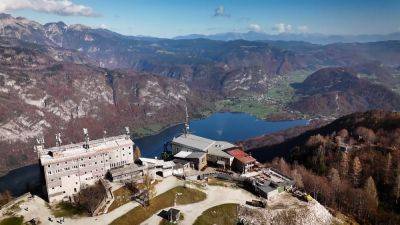Nuclear fusion energy: Inside the record-breaking JET project | Euronews Tech Talks podcast
Nuclear fusion might sound like something out of a science fiction film - and in the past, it certainly has been.
In the iconic science fiction movie "Back to the Future," for instance, the main characters travel to the future using a car modified with a travel-sized nuclear fusion reactor.
Fusion energy is not expected to break the space-time barrier in real life, yet this energy source has attracted lots of attention and investment from the scientific community.
But what is fusion energy and could it revolutionise the energy landscape?
Fusion energy is one of the two ways to produce nuclear energy together with nuclear fission, the method currently used in power plants to create electricity.
Nuclear fusion happens when two light atomic nuclei fuse. Typically, the light nuclei are two isotopes of hydrogen: deuterium and tritium. When they merge, they create one nucleus of helium, a neutron, and fusion energy.
Unlike nuclear fission, nuclear fusion is still being researched and is not yet an exploitable energy source.
“In the case of a fusion, we try and have a reaction between two particles, both charged positively,” says Roberto Zanino, a professor at the Polytechnic University of Turin in Italy.
“This is difficult, and is the main reason why we do not have fusion reactors producing electricity around the world right now”.
To overcome the repulsion of the two particles, nuclear fusion needs plasma, a hot, ionised, and electrically-charged gas, without which nuclear fusion would be impossible.
The problem with plasma, however, is that it is produced at extremely high temperatures, which are difficult to achieve and sustain within a fusion reactor. Due to its density, plasma is also incredibly difficult to contain in a








